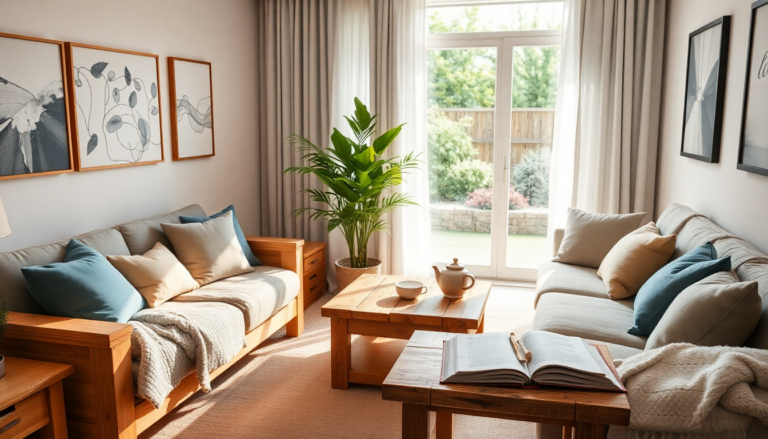Argomenti trattati
In today’s world, where technology seems to invade every corner of our lives, the quest for privacy in home design is more relevant than ever. Homeowners are looking to create spaces that not only radiate comfort but also serve as a refuge from the hustle and bustle outside. How can we cultivate that cozy sanctuary that also respects our need for personal boundaries? The answer lies in thoughtful design that echoes the warm sentiment of ‘mi casa es su casa’ while ensuring our peace and security.
The Evolution of Privacy in Home Design
As we navigate a landscape where connectivity is constant, the meaning of privacy in our homes has evolved significantly. Designers like Helena Clunies-Ross argue that privacy should start from the outside in. Think about it: landscapes can be both beautiful and protective. For example, tall hedges or strategically placed trees can create a sense of seclusion without needing a full redesign of your yard. One striking example is a Tribeca terrace transformed with large pots of soft grasses, neatly zoning different seating areas while providing a shield from nearby apartments. Isn’t it fascinating how a few plants can change the whole vibe of a space?
This trend isn’t just about erecting walls; it’s also about enhancing the overall visual experience. Blair Moore from Moore House Design champions the use of arbors and pergolas. These structures not only create that retreat-like feel we crave but also add charm and character to outdoor spaces. As designers work to balance openness with privacy, integrating natural elements becomes essential, allowing us to enjoy our surroundings while feeling safely tucked away. Who wouldn’t want that?
Innovative Strategies for Indoor Privacy
While outdoor spaces often steal the spotlight when it comes to privacy, we can’t overlook the importance of our indoor environments. Nadia Watts emphasizes that lighting plays a pivotal role in crafting a private ambiance. By directing light away from entryways and focusing it on landscaping features instead, homeowners can foster a warm and inviting atmosphere that discourages prying eyes. How do you feel about the lighting in your own home?
Additionally, window design is crucial for maintaining indoor privacy. Victoria McKenney suggests using leaded glass or textured glass accents to transform windows into striking features that enhance both beauty and seclusion. This innovative approach not only tackles privacy concerns but also elevates the overall aesthetic of the space. Isn’t it amazing how design can serve multiple purposes?
Creating a Sense of Security Within Open Spaces
The rise of open-concept living has brought new challenges for those seeking privacy and security in their homes. In recent projects, Watts has successfully employed art and furniture to define spaces. By placing artwork on columns and utilizing accent tables, she creates visual separations that allow for free movement while still nurturing an intimate atmosphere. This method encourages a natural flow throughout the home without sacrificing privacy. Wouldn’t it be nice to have an open space that still feels cozy?
If the built-in features are missing, room dividers can be a great solution for creating private zones. However, it’s vital to select materials that let light flow through while still providing seclusion. Clunies-Ross suggests using semi-transparent fabrics or traditional screening materials, which can partition areas without making them feel cramped. Isn’t it intriguing how thoughtful choices can make such a difference?
Enhancing Privacy Through Sensory Elements
But privacy isn’t just about what we see; it also involves what we hear. Soft furnishings like rugs and heavy drapes help create a quieter environment, amplifying the overall sense of seclusion. By incorporating acoustic panels and other sound-absorbing materials, designers can craft tranquil spaces that offer a peaceful escape from the outside noise. How much do you value a serene environment in your home?
In conclusion, the modern approach to home design emphasizes the creation of personal sanctuaries where privacy takes center stage. By merging creative landscaping, smart interior design, and sensory considerations, homeowners can cultivate spaces that feel secure and welcoming. The journey to a privacy-focused home isn’t just about building barriers; it’s about creating environments that nurture peace and comfort in our increasingly connected world. Ready to transform your space into a cozy sanctuary?

